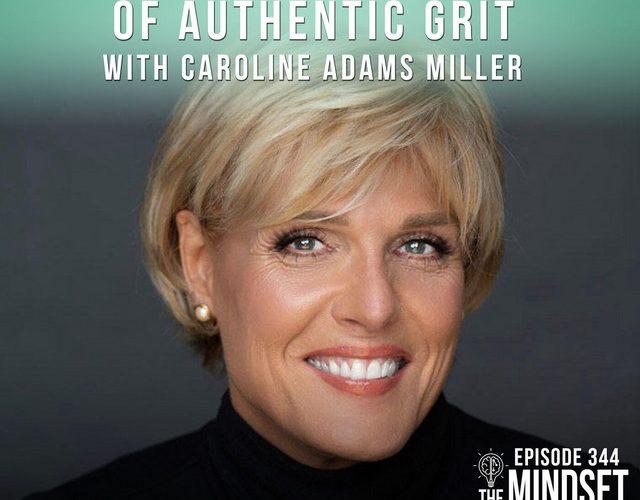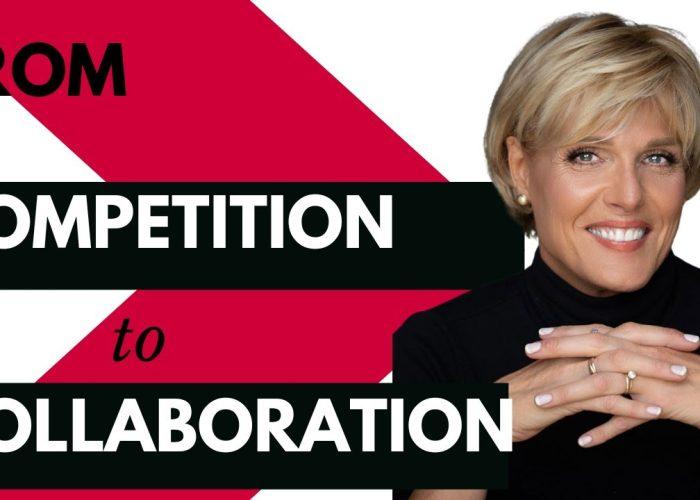January 11th, 2024
Resilient Leaders Essential To Moving Credit Unions—And Their Communities—Forward
Read the article here:
Leadership development is not a luxury, especially in challenging times.
By their very nature, credit unions foster resilience in their members by reinvesting profits back into communities to create thriving local economies. But in a post-pandemic world experiencing more disruption than ever, from both natural disasters and human-made sources, leaders must prioritize building resilience at the individual and organizational levels in order to safeguard staff, members and communities for the long term.
Credit union executives today are judged on how they face adversity, but for resilient executives, success is defined as much by the journey as the solution.
“One of the things that I’ve learned in coaching CEOs from around the world is that when boards of directors are analyzing CEO replacements or CEO candidates, they don’t look for candidates who have had no obstacles,” says Caroline Adams Miller, best-selling author of Getting Grit and speaker on successful goal-setting. “They look for the candidates who have weathered change and who have weathered upsets, disappointments and challenges like the coronavirus pandemic, and have actually made mistakes, but then are resilient enough to learn from them.”
What can executives do to strengthen their resilience and that of their organizations so they can lead and ensure successful outcomes during the harshest of conditions and most challenging of times?
What Resilient Leadership Looks Like
“The best definition I’ve ever heard of resilience is ‘struggling well,’” Miller says. “It’s really the capacity to recover quickly from difficulties, adapt to change and then maintain equilibrium. That could be an individual, it could be an organization, it could be a community, but it involves navigating challenges.”
Agility and a growth mindset are two of the most important characteristics of executives and organizations possessing a capacity for resilience.
“There has to be a certain amount of emotional agility and the ability to not have such a fixed mindset or a fixed approach to what change should look like or what the answer should look like, that you have the ability to move into another phase of what the organization can look like,” Miller explains.
Resilient leaders with a growth mindset are open to change and letting go of the past, as well as “being able to fail publicly and quickly, recover well and re-envision what it is that needs to be done in order to meet goals,” says Heather McKissick, CEO of CUES.
She notes that resilient organizations are those that have policies and processes that are more nimble and agile because they give staff the ability to pivot in the face of unplanned events.
“The idea of agile project management is not a new idea, but post-pandemic, organizations are beginning to understand its value because of how rapidly extra external forces are changing the needs of the members that credit unions serve,” McKissick says.
Developing Resilience in the Workplace
People learn by doing, so it’s important for credit unions to allow room for failure and use it as a learning and resilience-building exercise for employees. “The best companies run by elite CEOs have easy-to-find examples of ‘things that we haven’t done well’ to create resilience,” Miller says.
Such acknowledgement sends the message to staff that failure isn’t “a death sentence,” she notes, but rather that employees are expected to learn from their mistakes as part of readying the company to weather the next crisis.
Leaders developing their capacity for resilience often create a process for after-action reviews following a disaster, when they can unpack what happened and identify red flags and things that were missed. Those organizations willing to learn and curious about what could be coming next are the ones best prepared for change, Miller says.
Resilient organizations also have mentorship programs that work. “They don’t just say they have a mentoring program; they have people who actually seek out those who are younger or newer in their roles to teach them the ropes. As you get over the age of 50, the greatest form of well-being you can get in the workplace is being a generative giver—being able to mentor without it taking away from your own productivity,” Miller says.
For credit unions to deliver member-centered products, programs and services that allow members to be financially resilient, they also must develop staff who understands what financial health really means—and have the opportunity to experience that themselves, according to McKissick.
“A lot of credit union employees struggle with their own financial health,” she says. “What are we doing not only for our executives to develop the strategic capacity they need to lead organizations well, but also for the staff—especially the frontline facing staff—to feel great about their own financial health and their own ability to recover from difficult situations? When we can support our employee base in doing that, they are so much better equipped to serve the membership, and therefore live the mission of the credit union at large.”
Ultimately, “leadership development is not a luxury, especially in difficult times,” McKissick says. “We have to actively develop skills of resiliency in our teams that we want and need for them to display over time. We can’t wait for the next emergency and see if they can handle it. It must be a proactive, deliberate process.”
Resilience in Leaders’ Response to Unforeseen Circumstances
For Pablo DeFilippi, CUDE, EVP of the Inclusiv Network, resilience is the ability for credit union leaders to respond to unforeseen circumstances—whether catastrophic weather events, cyberattacks, international conflicts such as wars in Ukraine and Gaza, or other major disruptions—in a way that not only ensures business continuity but also supports their staff and local community during the crisis.
In particular, DeFilippi notes that in many regions of the world, climate change is exacerbating natural disasters such as wildfires, flooding, hurricanes, and other severe weather phenomena, which in turn can play a role in destabilizing communities and economies, triggering events like migrations or supply chain issues.
In the face of such well-documented climate disruption, it’s more important than ever for credit union leaders to demonstrate resilience and adaptation and be ready for disasters—even in regions of the world that have not traditionally been afflicted by them.
“Credit unions are starting to realize that this [climate change] is something more, and it should be part of our risk assessment,” DeFilippi says. “How do we prepare for those contingencies in a way that we can operate and function and respond to our communities quickly? With what we’re seeing in places like Puerto Rico, Louisiana and Florida, they understand that it’s not a matter of if it’s going to happen, but when, so disasters are now part of their business continuation plans.”
Puerto Rico provides a particularly valuable case study for leaders to learn from. Several major storms battered the island territory in recent years—including Hurricanes Irma and Maria in 2017, followed by Hurricane Fiona in 2022—resulting in severe damage to its electricity grid (causing the longest blackout in U.S. history, at 11 months), as well as to roads, hospitals, schools, water systems and other critical systems, according to the U.S. Government Accountability Office.
In the immediate aftermath of Irma and Maria, limited institutional knowledge and capacity to manage disaster recovery programs hampered Puerto Rico’s ability to recover quickly, according to GAO analysts. However, since then, the community has developed new skills and knowledge that have increased its resilience and ability to respond to future disasters more effectively.
“In the case of Puerto Rico, now they know that they have to have generators; they know that they have to have a team that may be relocated overnight so they can maintain services,” DeFilippi explains. “They also know that they have to have fuel available. That was one of the lessons learned, is that it’s not just enough to have the infrastructure, you also have to have the fuel to operate the infrastructure, because everything disappears when you have a natural disaster.”
Even access to the basic essentials needed to live, such as water and food, becomes challenging in severe disaster situations, he notes.
Lessons from climate resiliency efforts made by Puerto Rico and other communities worldwide can help credit unions strengthen their general resiliency overall, according to Neda Arabshahi, SVP for the Inclusiv Center for Resiliency and Clean Energy.
Arabshahi reports that Inclusiv is now seeing credit unions ask themselves questions like:
- What do my employees need to be able to do their jobs during a disaster—not just from the credit union but also from outside the credit union?
- If a credit union’s facilities sustain significant physical damage or lose all power and telecommunications, what will it require to relocate team members to an alternative location?
- If staff members have damage to their homes during a storm, can the credit union designate a team to go physically help rebuild those homes? (e.g., patch windows, put covers on damaged roofs, etc.)
“What’s been striking to me is that you can’t really have full resilience if you’re only thinking about what happens within your physical walls or within your email system,” Arabshahi says. “It really is about thinking about the leadership and the staff as whole people who need to be able to function in their outside lives, in order to be able to function in their roles within the credit union as well.”
Resilient Leaders Support Forward-Focused Efforts
In building resilience at the organizational and community levels, credit union executives not only must make concerted efforts to learn from those who have “struggled well” in responding to disasters in the past, but they also should consider developing forward-focused initiatives and infrastructure that will help them respond to catastrophic events more effectively in the future.
Offering a potential model, $143 million Kaua’i Federal Credit Union in Lihue, Hawaii, is developing a new branch and economic resilience center to reflect its vision for economic growth grounded in environmental sustainability and social entrepreneurship. The project is now in its discovery phase.
Kaua’i FCU’s focus on economic resiliency developed in response to historic flooding on the island in 2018, and the importance of such a project as a potential model for other communities impacted by disasters was only underscored by the Hawaiian wildfires that devastated the historic town of Lahaina on Maui in 2023.
“We will always offer traditional financial services, yet this growth and evolution of our credit union has the power to create a more equitable, diverse and most importantly, socially responsible, regenerative economic model for the island,” says Monica Belz, president/CEO of the CU in a 2022 press release on the credit union’s site announcing the credit union’s acquisition of and plan to restore an historic building that would house its new branch and economic resilience center. “Our model is one of a circular economy. With rising inflation and a severe lack of affordable housing, we are committed to building an economy that puts people over profit.”
Kaua’i FCU’s model of a circular economy is informed by Native Hawaiian values and practices that created abundance on Kaua’i for generations.
Kaua’i FCU Director of Development Bria Greer comes to the project from G70, an award-winning design firm of architects, civil engineers, planners, interior designers and asset managers. She is enthusiastic about the opportunity to reflect past and present in a space where Kaua’i FCU intersects with the community in a myriad of ways.
“We have a unique opportunity to serve the community by creating innovative settings, experiences and partnerships,” Greer says in the same release. “We are excited to co-create with our community and reimagine how the built environment can enhance resiliency and contribute to a regenerative economy.”
Relief funds and financial cooperatives also exist around the world to help credit unions and surrounding communities hit by natural and human-made disasters survive, rebound and thrive—better prepared for the next time disaster hits.
“Through Project Storm Break, we see and support credit unions going through natural disasters, economic downturns and war,” says Mike Reuter, executive director of the Worldwide Foundation for Credit Unions, which administers the project. “Reaching out for a Project Storm Break relief campaign is already one step to bouncing back during crisis.”
Since Project Storm Break’s launch in 2019, the foundation has used disaster relief campaign funds to respond swiftly and proactively in rebuilding and training international credit union systems to be stronger and even more resilient in the face of future disasters.
“Through war, credit unions have been able to keep their doors open and continue supporting their members through unimaginable times,” Reuter says, citing the war in Ukraine as a particularly inspiring example of resilience during crisis.
To help credit unions in Ukraine stay open, WFCU’s resilience initiative focuses on lending for Ukrainian businesses owned by women or displaced people and sustainable finance for rural businesses.
“After Russia declared war in Ukraine, Kharkiv Credit Union (Kharkiv, Ukraine) opened lending to its members through the Ukrainian Credit Union Displacement Fund. Even credit union members like small-farm owners bounced back through the program to provide food security in their rural communities,” Reuter says.
Another Project Storm Break campaign, the Turkish Cooperative Earthquake Relief Fund was instrumental in helping the Agricultural Credit Cooperatives of Turkey, which resumed operations of some of their credit cooperatives with portable office units from the fund after two devastating earthquakes closed their doors.
“This allowed their farmer members to continue producing and supporting the earthquake-impacted region through food security as well as provide housing for credit cooperative employees in need,” Reuter says.
“These credit unions and members are resilient everyday just by keeping their doors open to support their communities.”
Amy Freed Stalzer, CAE, is a writer and communications consultant based in the Washington, D.C., area.
To see the original post, click here:




